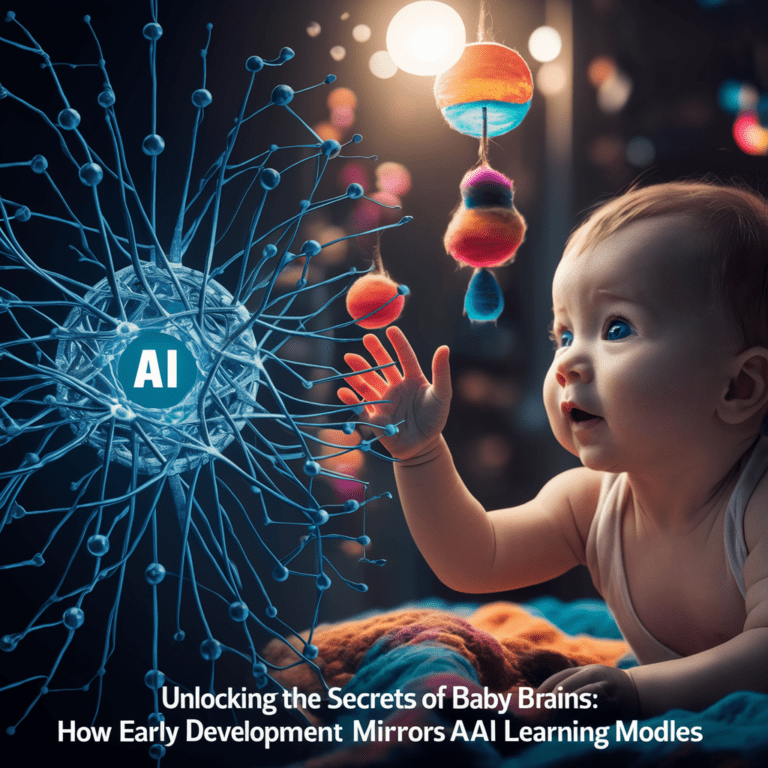Unlocking the Secrets of Baby Brains
In a world increasingly dominated by artificial intelligence, understanding how machines learn has become a key focus of research. But what if the key to the next breakthrough in AI lies not in silicon and circuits, but in the soft, developing brains of human infants? A groundbreaking study led by Trinity College Dublin proposes just that: the postnatal 'helplessness' period in babies is not a sign of immaturity, but rather a crucial time for building powerful foundational models, much like the pre-training phase of generative AI systems such as ChatGPT.
Rethinking Infant Helplessness
For decades, the classic explanation for the extended helplessness of human infants has been that they are born prematurely due to the constraints of human childbirth, resulting in immature brains that require significant time to develop. This notion has been challenged by recent findings published in the journal Trends in Cognitive Sciences. The study, spearheaded by Professor Rhodri Cusack, Professor of Cognitive Neuroscience at Trinity College Dublin, reveals that this helpless period is, in fact, a critical phase for cognitive development.
Key Findings of the Study
The research team, including experts from Auburn University and AI researchers from DeepMind, employed neuroimaging techniques to compare brain development across various species. They discovered that human brains, contrary to long-held beliefs, are relatively mature at birth. This maturity allows infants to process complex sensory information early on, laying the groundwork for advanced cognitive functions.
Highlights of the Research:
- Mature Brains at Birth: Human infants possess more developed brains at birth compared to many other species. This early maturity enables them to start processing sensory information almost immediately.
- Sensory Processing: Infants use the rich streams of sensory data available to them during their 'helpless' period to form foundational cognitive models. This sensory processing is akin to the pre-training phase in AI models.
- Evolutionary Advantage: The prolonged helplessness of human infants, despite being a risk factor, has survived evolutionary pressures because it plays a crucial role in cognitive development.
Drawing Parallels with AI
The study draws fascinating parallels between infant learning and the development of AI models. Modern AI, particularly generative AI like OpenAI's ChatGPT, relies on a pre-training phase where the model is exposed to vast amounts of data to recognize patterns and develop foundational capabilities. This process enables the AI to learn new tasks more quickly and perform them more effectively.
Professor Cusack explains, “We propose that human infants similarly use the 'helpless' period in infancy to pre-train, learning powerful foundation models, which go on to underpin cognition in later life with high performance and rapid generalization. This is very similar to the powerful machine learning models that have led to the big breakthroughs in generative AI in recent years, such as OpenAI's ChatGPT or Google's Gemini.”
Implications for Future AI Research
Understanding the sophisticated learning processes of human infants could revolutionize the next generation of AI models. Current AI systems, while powerful, consume vast amounts of energy and require extensive data for training. Babies, on the other hand, achieve remarkable cognitive development with far fewer resources. By studying these natural learning mechanisms, researchers aim to create more efficient and sustainable AI technologies.
Potential Research Directions:
- Energy Efficiency: Exploring how infants learn efficiently could lead to AI models that require less computational power and energy.
- Data Utilization: Babies use relatively minimal data compared to AI models. Understanding this process could help in developing AI that learns more effectively from smaller datasets.
- Neuro-AI Integration: Bridging the gap between neuroscience and AI research can pave the way for innovations that mimic the natural intelligence of human brains.
Conclusion
The parallels between infant brain development and AI learning models are not just intriguing—they could be transformative. By unlocking the secrets of how babies build their cognitive foundations, we can inspire the creation of next-generation AI that is smarter, more efficient, and more aligned with natural learning processes. As we continue to explore these connections, the future of both cognitive science and artificial intelligence looks brighter than ever.
Join the conversation! How do you think insights from infant learning can influence AI development? Share your thoughts in the comments below.
Source Link :Research
